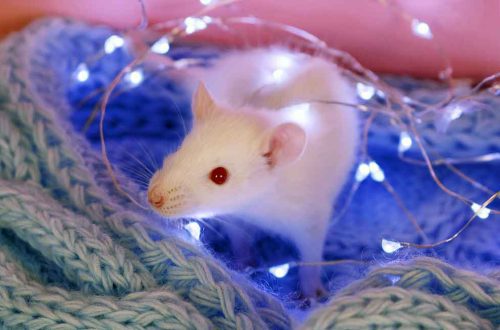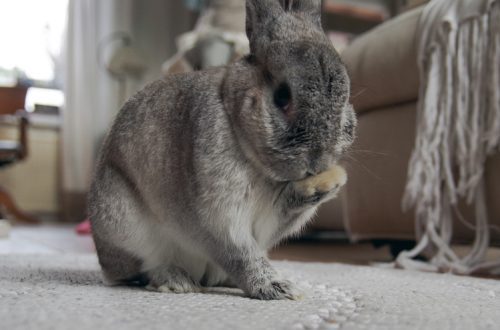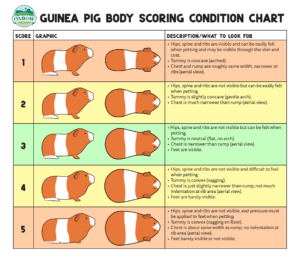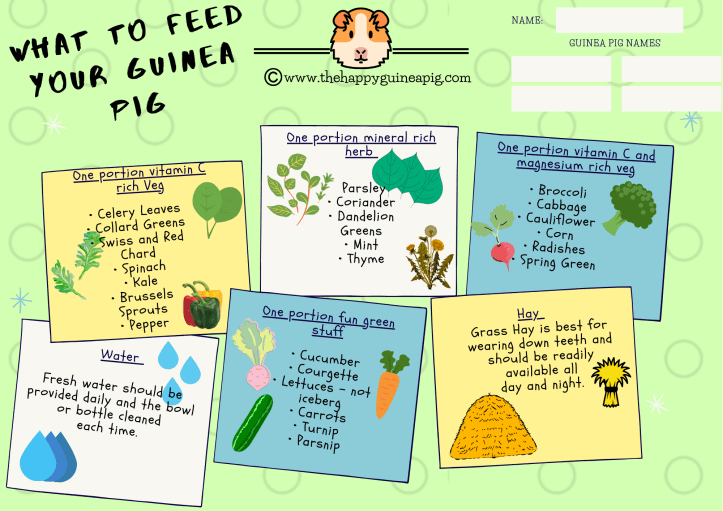
Guinea Pig Feeding Basics
How to properly feed a guinea pig? List of useful and dangerous products.
The length of the intestines of a guinea pig is about 2 m, and this is 10-12 times its own height! The process of digestion in guinea pigs can take up to a week. In order for it to proceed normally, the stomach must be constantly filled with food. If food does not enter the intestines for more than 12 hours, the intestines will stop working. There will be gas and bloating. In most cases, this leads to the death of the pet.
Your guinea pig should always have access to fresh hay.
Due to the long process of digestion, the diet of the guinea pig must be stable. Any changes should be made only if necessary, having coordinated them with a veterinarian. Even small errors in the diet can lead to disruption of the digestive process and subsequent problems. Unfortunately, even because of a single wrong treat, the mumps can die.
Drinking regimen is also very important for a guinea pig. If the animal drinks little water, the food in the gastrointestinal tract becomes denser, its progress becomes more difficult. This disrupts the balance of microflora in the intestines: bacteria multiply and cause flatulence.
For a rodent to drink enough, one bowl is not enough. Install several drinkers in the cage and change the water in them regularly.
Unlike hamsters, mice, and rats, guinea pigs are herbivores. The basis of her diet should be hay, not cereals. But not all hay is equally useful for a rodent.
Hay must be nutritious and properly stored. In no case should you feed your pet wet, stale, dusty hay – it can be a source of fungi, mold and parasites. Freshly dried hay is also not the best choice: after haymaking, it is recommended to air it for at least 1,5 months. Guinea pigs are very sensitive to food, and they quickly get sick from poor-quality, contaminated foods.
What should be of concern:
Greyish shade of hay. Most likely, such hay has been dried out or it has been stored for a very long time.
Brown or dark brown hay. Most likely, it was not removed in time, was not stored well or removed in rainy weather.
Dark brown dots, with a whitish-gray coating, indicate mold and harmful microflora.
Such hay should not be given to rodents.
What hay to choose?
Alpine hay is more nutritious than meadow hay. You can draw an analogy with tea: the higher it grows, the higher its properties.
Hay of the second and third cutting: it has the maximum content of digestible fiber.
With herbs in the composition: chamomile, clover, alfalfa, etc. This hay is healthier and tastier. There are 34 types of herbs in Fiory pressed hay, including those with medicinal properties.
We recommend choosing hay from professional brands for guinea pigs. So you will be sure of the environmental friendliness and quality of the product.
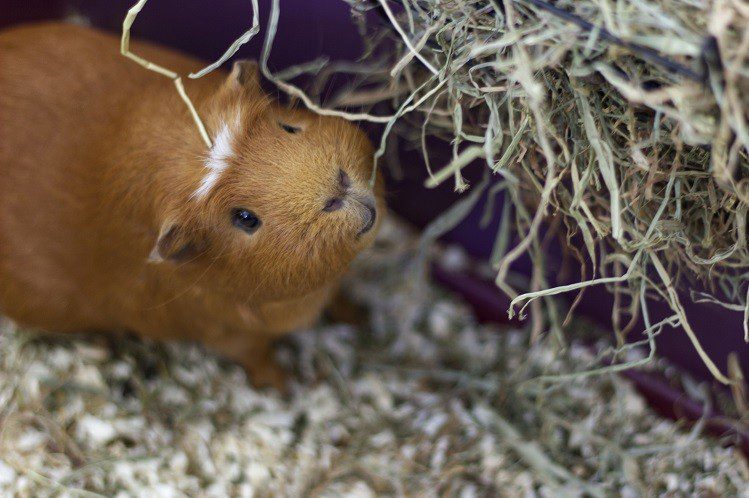
All varieties of lettuce, broccoli, bok choy, cauliflower, carrots, cucumbers, apples, melons and pears (in small quantities) are suitable for guinea pigs.
Plants useful for guinea pigs: anise, young shoots and leaves of blackberries, calendula, chamomile, cumin, coriander, mosquito, clover, ripe rose hips, berries and leaves of lingonberries, wild strawberries and blueberries (in small quantities), coriander, chamomile, yarrow, linden flowers, lettuce, raspberry leaves, shepherd’s purse, peppermint, dandelions, nettle, sage, coltsfoot, quinoa, wormwood, chickweed, fodder beet, and cinquefoil. Useful plants also include corn, sunflower. Rodents love any part of them.
Plants for guinea pigs should be collected away from highways and industrial enterprises, in ecologically clean places. If you are not sure about the quality of the environment, it’s not worth the risk. It is better to purchase special treats for guinea pigs at a pet store or grow your own greens. How to do this, we described in the article “”.
These plants should never be in your guinea pig’s diet. Even a small amount of the animal can die.
Poisonous herbs for guinea pigs: aconite (wrestler), amaryllis, agave, alpine violet (cyclamen), white locust, aloe, azalea, geranium, fern, lily, henbane, blueberry, nightshade, wild garlic, foxglove, budra, sorrel, lily of the valley and narcissus, snowdrop, hyacinth, celandine, urchin and primrose. Wisteria, gorse, mountain bay leaf, boxwood, gorse, yew, ivy, derain, broom, sumac, holly, honeysuckle, dogwood are also unsafe.
Shoots and twigs of trees and shrubsthat can harm rodents: thuja, oleander, privet, laurel cherry, wolfberry, juniper, belladonna, elderberry, snowberry, cypress spurge, calla, mistletoe, hellebore.
Products from our table, any seasoned delicacies and exotic fruits, food for other animals are not suitable for guinea pigs. If you want to treat your pig to something new, but doubt the benefits of a treat, don’t experiment. Consult a breeder or veterinarian.
The body of a guinea pig, like the human body, cannot independently synthesize ascorbic acid – vitamin C. The daily need for it in a rodent in a calm state is 16 mg, in a state of excitement, stress, and with various ailments and pregnancy – up to 30 mg / 1 kg weight. We talked about this in more detail in the article “”.
Vitamin C must be ingested daily with food.
With self-preparation of food for pigs, it is difficult to satisfy the needs of the body. You will need to calculate how much vitamin C and other nutrients your guinea pig should consume each day.
An overabundance of vitamins is as dangerous as their deficiency, so “measuring by eye” is a bad strategy.
In professional feeds, the composition is strictly balanced. It is enough to follow the feeding rate indicated on the package so that the pig receives all the nutrients for healthy development.
The advantage of ready-made diets is not only in the optimal balance of ingredients and enrichment with vitamin C, but also in convenience and time saving. You will not need to spend time selecting and arranging products for the pig.
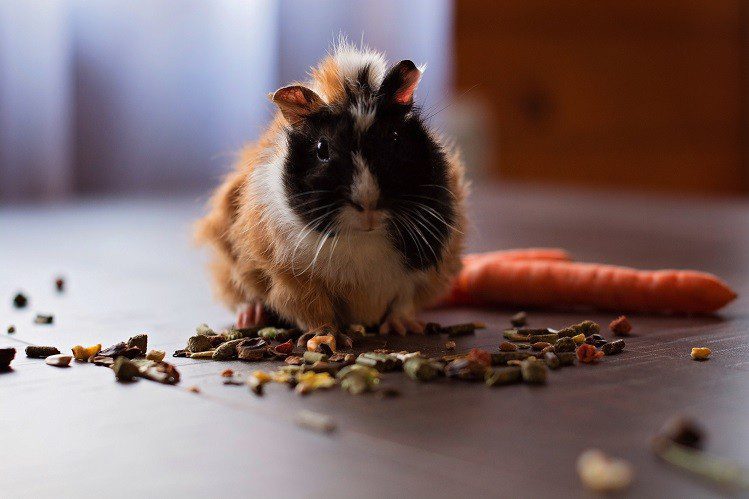
50-60% of a guinea pig’s diet should be hay. It should always be available to the animal, every day.
20-30% – balanced grain mix for rodents.
10-20% – herbs, vegetables and fruits suitable for guinea pigs.
10% – sticks and treats for guinea pigs. You need to choose special delicacies for rodents (Fiory). Delicacies from the table are not suitable for this role.
In unlimited quantities, you can give the pig branches of fruit trees, willows, aspens. There must be a mineral stone in the cage.
The basis of the guinea pig diet is high-quality hay.
The pig should always have access to hay, even if you give your pet a lot of greens in the summer.
Pigs should always have access to clean drinking water.
Adult guinea pigs are fed 2 or 3 times a day. Usually the volume of one serving of food is 35-50 grams, which is about 1-2 tablespoons. Be sure to check the feeding rate indicated on the package.
Many plants, fruits, and vegetables are deadly to guinea pigs. Before introducing a new food into your pet’s diet, make sure it is safe.
Proper feeding is the most important and very interesting point in caring for a guinea pig. By choosing healthy foods and getting to know your pet’s taste preferences in practice, you can provide him with all the necessary vitamins. So that your pet will please you with good health and beauty for many years.



